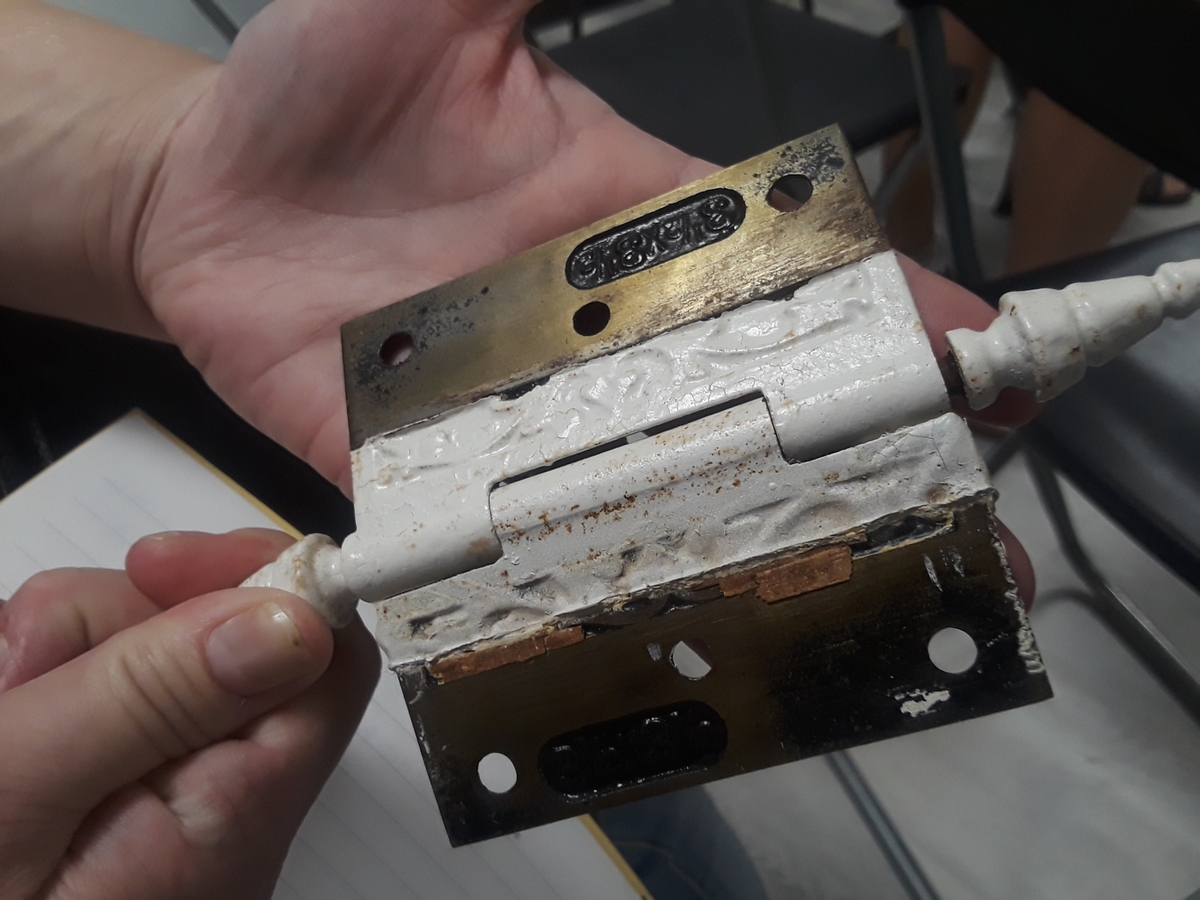
Allan Appel photo
A painted hinge, ready to be cleaned up on Wednesday night.
There’s an unusual and still little known new hospital in New Haven: It doesn’t accept most insurance, patients for the most part perform the treatments on themselves, and — most remarkably — it makes the old new again, well, at least look new, provided you are a hinge, doorknob, rosette, latch or lock.
Welcome to Houseparts Hospital #1, the coyly but seriously titled second in a new series of programs organized by the New Haven Preservation Trust (NHPT) to promote architectural literacy and the importance of preserving the city’s historical homes. Per Wednesday night’s event, the series is also preserving the fascinating hardware holding together an historical home’s doors, windows, and cabinets.
A standing-room-only crowd of more than 40 enthusiasts gathered in one of the rooms of Make Haven at 770 Chapel St. for an hour’s illustrated lecture and demonstration by landscape architect Oliver Gaffney. His mission: to help owners of area historic homes to identify and bring back into good repair, through tools available at MakeHaven, some of the splendid hardware created by Sargent, Lockwood, P&F Corbin Company, the various ancestors of today’s Assa Abloy and other 19th and early 20th century area manufacturers.

Oliver Gaffney.
The owner himself of a much loved if demanding 1892 stick-style Victorian home atop Fair Haven Heights, Gaffney, a NHPT board member, mixed impressive rapid-fire historical info (“Any doorknob questions?”) with good humor as he offered, among many topics, recipes for ways to remove old paint from a hinge — boil ugly painted-over hinge in a dedicated crock pot, but absolutely never use your spouse’s or one also used for the family stew or chili.
Also, you must be careful in your use of heat as the hinge or knob or lock part could have a delicate lacquer on it, and with too much heat, that lacquer might just float to the surface.
Next step in the cleaning, use a set of dedicated tongs to lift the metal part out of the crock pot (“Not hardware tongs today, and then use it for lunch tomorrow!”); then give it a “cold crash” in ice water, and a going over with a stiff brush. That should remove a lot of the paint, but be careful if it’s oil-based, Gaffney cautioned, as those flakes should be carefully disposed of.
How then to give a careful polish and shine? Gaffney suggested Bar Keepers Friend.
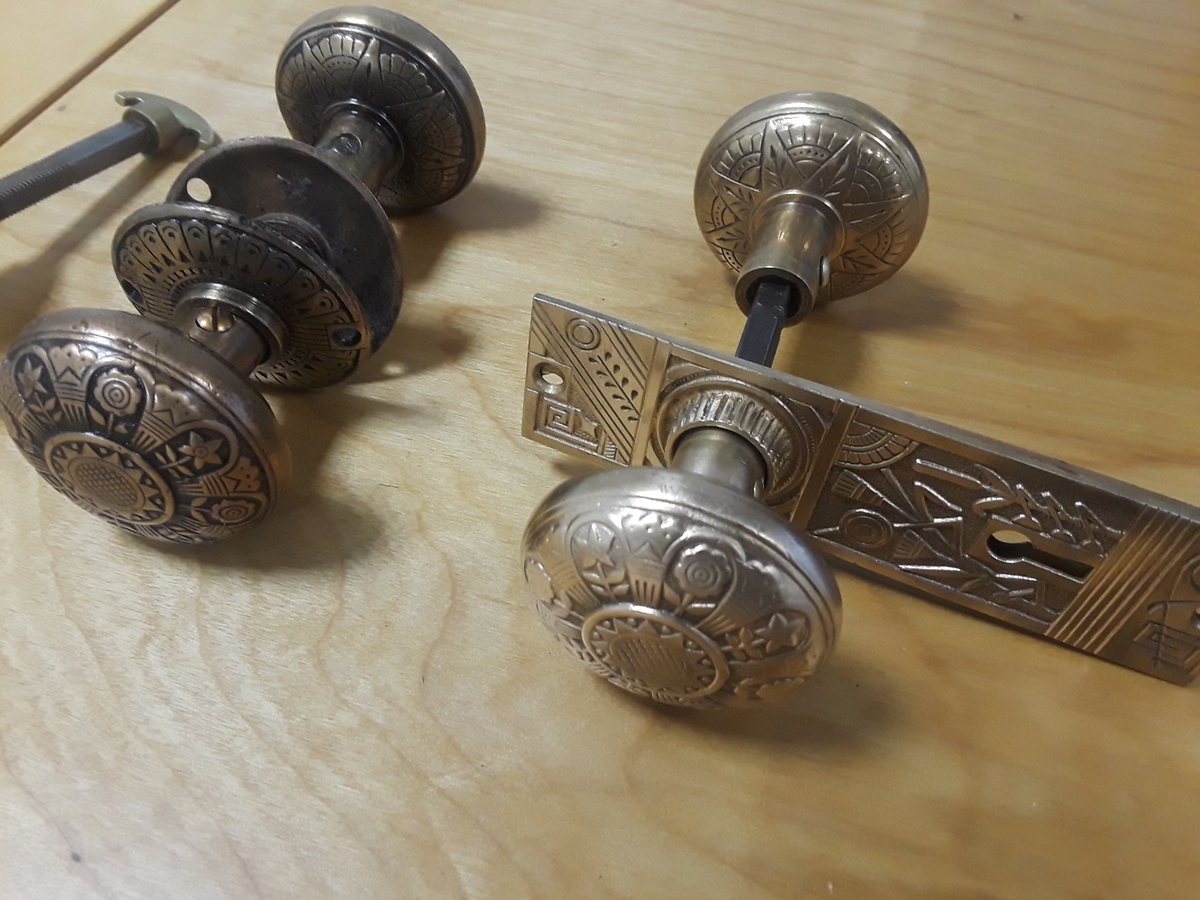
Cast bronze door knobs, Lockwood Manufacturing, South Norwalk, 1890s
And many other products and techniques, the challenge, of course, being that very often the carpenters and professionals brought in for renovations on historical homes don’t have the regard for the historical hardware that Gaffney and NHPT folks feel is necessary, and the task is left to the autodidact homeowner — thus the hospital and the programs.
The hinge in question that he discussed was one that the carpenter Gaffney had employed suggested was so rusted over, it should be tossed. Little did the fellow know who he was dealing with.
Alas, finding replacement hinges, lock parts, or window sashes often involves, Gaffney said, not only going through what resources exist on line (Antique Doorknob Collectors of America), but hanging out at salvage lots and negotiating laboriously researched items — and fighting for them — on sites such as eBay.
And if you don’t somehow come up with 19 escutcheons or a half dozen lock rosettes to match precisely the one you have rescued on your house, well, then, tasteful modern reproductions are an okay option too, Gaffney said.
As long, that is, that you don’t use cheesy substitutes offered by Home Depot (that Evil Name was occasionally invoked under his breath), for there surely was a purist sensibility, though softened by good cheer, percolating through Gaffney’s fascinating remarks: “If you use a Phillips screw [which was not on the market until the 1930s] on your Victorian house, the New Haven Preservation Trust will come by to haunt you.”
Not really, of course, and fellow Fair Havener Alissa Chapin got it.
She and her husband Kevin Hugh Chapin own the violin-making shop, Chapin Fine Violins, which operates out of their 1884 stick Victorian on Quinnipiac Avenue,
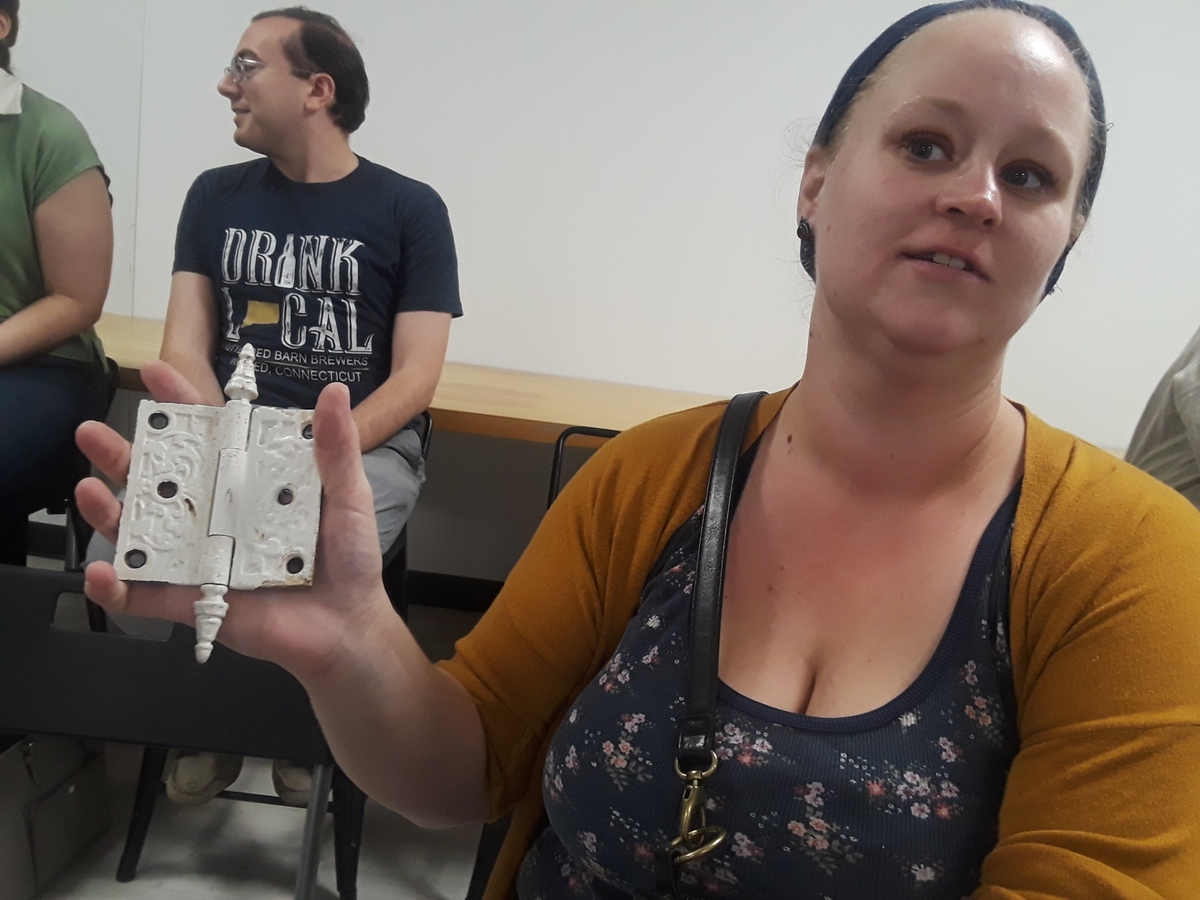
Alissa Chapin with her hinge
And she had brought a half-paint-removed, half-paint-covered hinge from the house to Gaffney’s session.
“I cleaned some,” she said, but had removed some of the gold finish in the process. And since she has six or eight left in her house, she added, “I’d like to hear how to do it.”
And she did. Gaffney had referred several times in passing to linseed oil and Chapin left the gathering encouraged to try the product on the hinges as a kind of finish that would also function as a rust inhibitor, after, of course, the paint comes off.
Having enough linseed oil a problem? Not at all when you operate a violin shop.
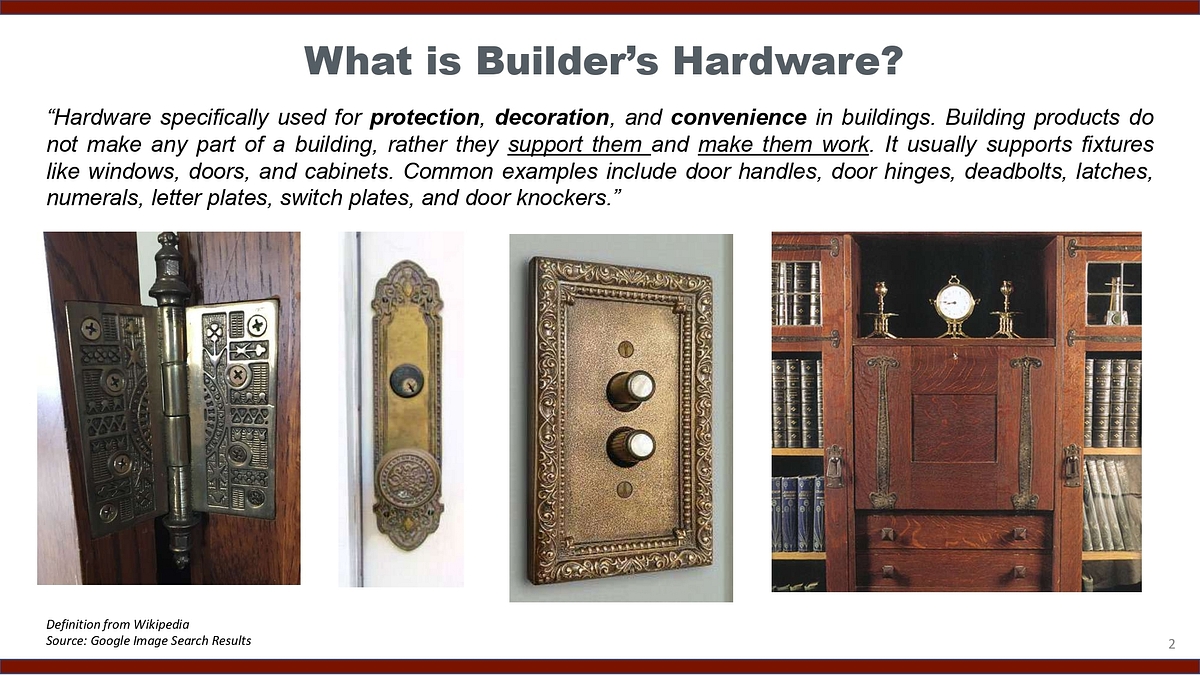
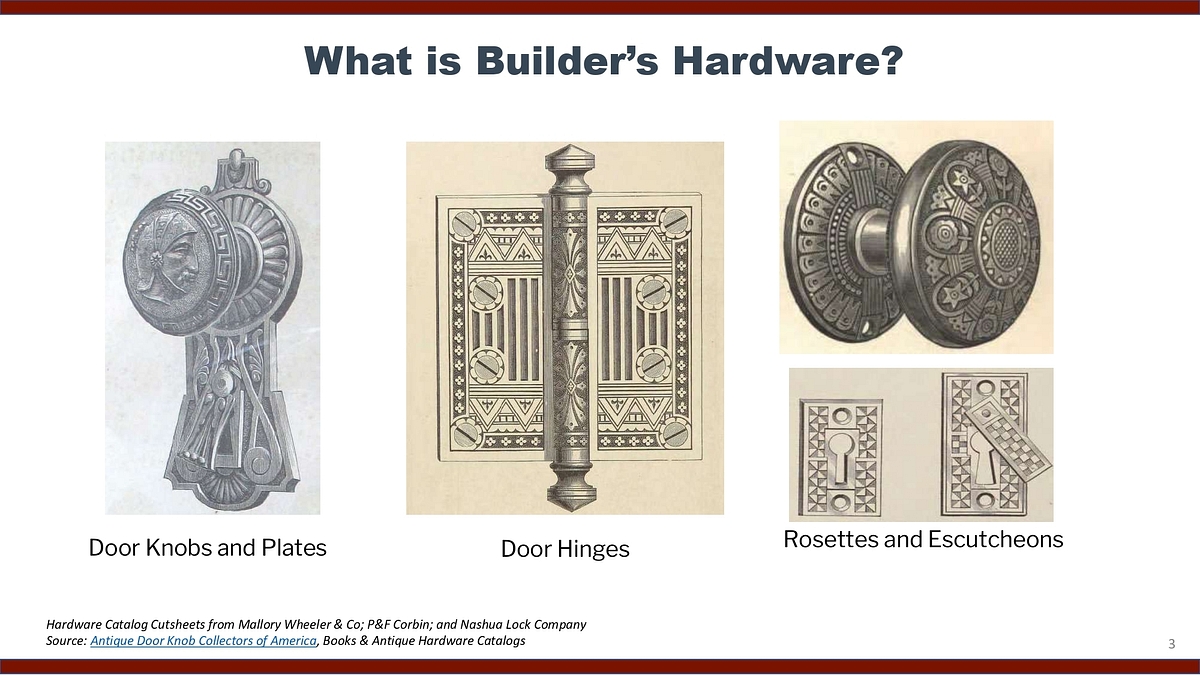
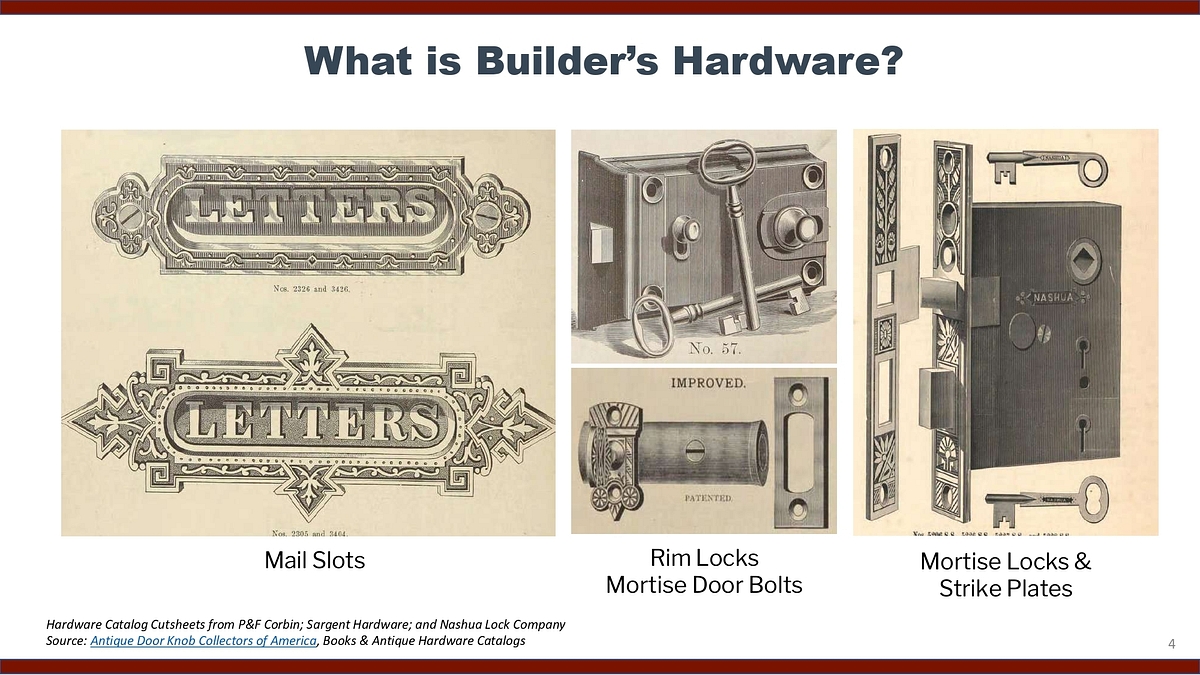
Click here to see the complete visuals that Gaffney provided in his lecture.
His “closing thoughts” section of the talk included not only humor – if you want people to say kind things about you and your house in a hundred years, you’ll take care not to let bad things happen to good hardware – but also the truth of the matter: Namely that hardware serves an important “supporting role” in the story of house and deserves the love and attention demonstrated.



I'm sorry I missed this. Drives me crazy when people discard great hardware and, for that matter, raised panel doors themselves. Usually it because if a single tiny spring or not understanding that a 20 minute remortise of the strike plate (hammer and chisel) is all you need to go another 100 years with it.